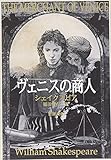Jerry Brotton*1 “Is this the real model for Othello?” http://www.theguardian.com/culture/2016/mar/19/moroccan-ambassador-london-1600-real-othello-shakespeare
Abd al-Wahid bin Masoud bin Muhammad al-Annuri*2は1600年から翌年にかけて、モロッコ大使として倫敦に滞在した。その肖像画は英国に現存する最古のイスラーム教徒のポートレイトだとされる。現在、その絵を所蔵しているのは「バーミンガム大学のシェイクスピア研究所」である。また、彼はシェイクスピアの『オセロ』のキャラクターに大きな影響を与えていたとも考えられる。
Abd al-Wahid bin Masoud bin Muhammad al-Annuriが倫敦に来たのは、「共通の敵」たるカトリックの西班牙に対抗するためのイングランドとの同盟関係を構築するためだった。最初に言及した肖像画はその同盟関係締結を記念するためのものであった。また、彼は Morisco、すなわち強制的に基督教に改宗させられたがモロッコに逃れてイスラームに復帰した西班牙生まれのムスリムだった。エリザベス朝のイングランドが接触したムスリムはal-Annuriだけではなかった。1560年代にエリザベス1世*3は通商関係を求めて、シーア派のペルシアのShah Tahmaspに書翰を送っている。その当時、ヴァティカンは基督教徒(カトリック)とムスリムの間の交易を禁止していたが、エリザベスは1570年に教皇ピウス5世によって波紋処分を受けているので、それ以降、ムスリムとの交易禁止政策からは自由になった。1581年には、コンスタンティノーブルに大使を派遣し、オスマン帝国との通商条約を締結している。なので、エリザベス朝のエリートにとって、イスラーム教徒というのは思った以上に馴染みのある存在だった。劇作家にとっても、けっこうお馴染みのネタだった。
Al-Annuri had landed in England in August leading a 16-man Moroccan delegation of merchants, translators and holy men to conclude a military alliance between the Protestant Tudors and Muslim Morocco against their common enemy, Catholic Spain. It was the culmination of 50 years of amicable Anglo-Moroccan relations that saw a thriving trade in Moroccan saltpetre (used to make gunpowder) and sugar (that played havoc with Queen Elizabeth’s teeth), in exchange for English cloth and munitions. It led to a cordial correspondence between Elizabeth and Al‑Mansur and the creation of London’s Barbary Company in 1585, which was soon shipping hundreds of tonnes of merchandise back and forth.When Al-Annuri’s retinue rode into London in August 1600 he was accompanied by the city’s Barbary merchants, who gave them a house on the Strand where they stayed for nearly six months, to the fear and amazement of many Londoners. One wrote that they “are strangely attired and behavioured”. The city’s chronicler John Stow observed that they “killed all their own meat within their house” and “turn their faces eastward when they kill any thing; they use beads, and pray to Saints”. The gossipy diarist John Chamberlain thought it was “no small honour to us that nations so far remote, and every way different, should meet here to admire the glory and magnificence of our Queen”. Within weeks, Al‑Annuri was given audiences with the same queen, first at Nonsuch Palace and then Oatlands. There, he put forward a remarkable proposal: a military alliance between Muslim Morocco and Protestant England, in which they would “join forces against the King of Spain, their common foe and enemy” and reconquer Spain for Islam. Even more audaciously he proposed “they could also wrest the East and West Indies from the Spanish”, the first and last time that a Protestant–Muslim confederation was proposed to rule Latin America.
As Al-Annuri awaited the outcome of these negotiations in the final weeks of 1600, his portrait was painted to commemorate the imminent ratification of an Anglo-Moroccan alliance that would transform the balance of power in Europe. But it was not to be. Elizabeth discovered that Al-Annuri was a Morisco, a Spanish-born Muslim forcibly converted to Christianity who had found his way to Morocco and reverted. She tried to “turn” Al-Annuri by proposing he and his fellow Moriscos join the Protestant struggle against Spain. The offer seems to have caused a rebellion among the Moroccan delegation. Stow reported that Al-Annuri remained loyal to Al‑Mansur, but “poisoned their interpreter being born in Granada”, another Morisco, “because he commended the estate and bounty of England”. Talks broke down, and by February 1601 Al‑Annuri was back in Morocco. Two years later Elizabeth and Al-Mansur were dead, with England’s new king, James I, negotiating a peace deal with Spain that would end the need for an Anglo-Islamic alliance, consigning Al-Annuri’s embassy into an embarrassing historical footnote.
Elizabethan dramatists were quick to exploit the ambiguities and contradictions of such alliances. From the late 1580s, beginning with Marlowe’s Tamburlaine the Great, more than 60 plays were performed with Islamic characters, themes or settings. As the theological terms “Islam” and “Muslim” only appeared in English in the 17th century, characters defined by terms such as “Moors”, “Saracens”, “Turks” and “Persians” predominated in more than 40 plays performed in the 1590s. Shakespeare followed fashion by rehearsing one Moor, the evil Aaron in Titus Andronicus (c1594), followed by another, The Merchant of Venice’s noble suitor to Portia, the Prince of Morocco (1596).Four years later, within just months of Al-Annuri’s public departure, Shakespeare began another play, this time with the Moor as its central character. The similarities to Al-Annuri are striking. Othello is a mercenary, invited into the heart of a Christian community to fight the infidel but who is eventually unceremoniously expelled. As with Al‑Annuri, his ethnicity and religion are obscure. Asked his story, he speaks: “Of being taken by the insolent foe / And sold to slavery; of my redemption thence / And portance in my traveller’s history.”

- 作者: シェイクスピア,福田恒存
- 出版社/メーカー: 新潮社
- 発売日: 1967/11/01
- メディア: 文庫
- 購入: 4人 クリック: 30回
- この商品を含むブログ (32件) を見る

- 作者: シェイクスピア,福田恒存
- 出版社/メーカー: 新潮社
- 発売日: 1951/08/01
- メディア: 文庫
- 購入: 1人 クリック: 21回
- この商品を含むブログ (43件) を見る
*1:See eg. http://www.sed.qmul.ac.uk/staff/brottonj.html
*2:See eg. https://en.wikipedia.org/wiki/Abd_el-Ouahed_ben_Messaoud
*3:See also http://d.hatena.ne.jp/sumita-m/20091208/1260270282
*4:See Vanessa Thorpe"Sufi or not Sufi? That is the question" http://www.theguardian.com/uk/2004/oct/24/religion.artsnews Mentioned in http://d.hatena.ne.jp/sumita-m/20050904